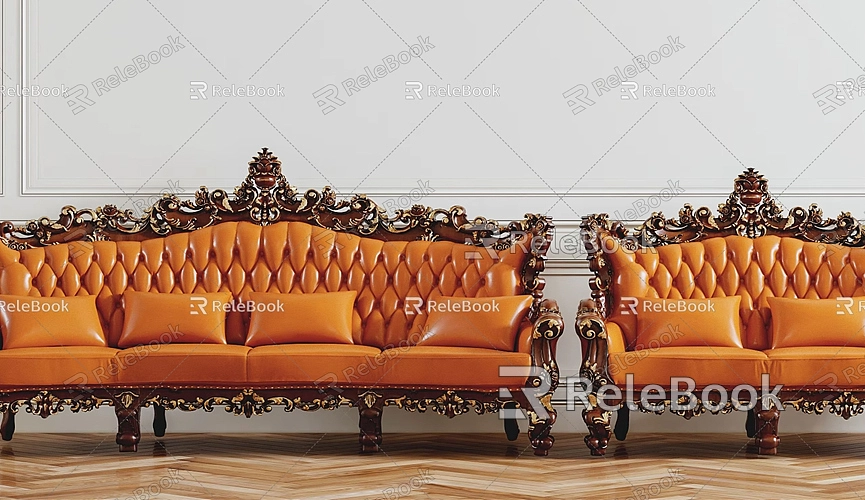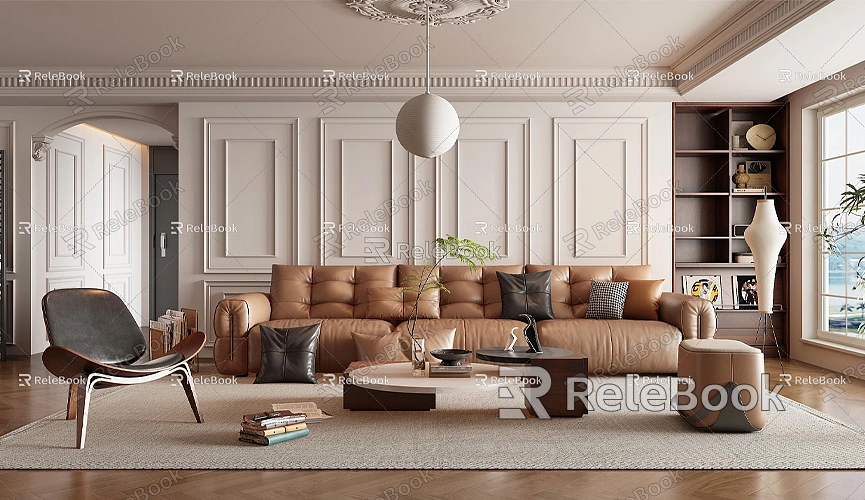How to model antique furniture sketchup
Modeling antique furniture is both an artistic and technical process that combines complex curves, intricate decorative details, and realistic texture work. This type of furniture is often found in interior designs inspired by Victorian, Baroque, and Neoclassical styles, and its unique aesthetic and craftsmanship make it a favorite among modelers and designers. In this article, we will explore how to efficiently model antique furniture using SketchUp, incorporating high-quality resources and practical tips to help you create outstanding 3D models.
Why SketchUp is Ideal for Antique Furniture Modeling

SketchUp has become a favorite 3D design tool for many modelers due to its intuitive interface and powerful extension capabilities. Its advantages lie mainly in its flexible operation, quick learning curve, and extensive plugin support. For antique furniture modeling, SketchUp’s unique features help designers quickly create complex geometric shapes and refine intricate details:
· Ease of Creation: SketchUp allows designers to quickly build basic models using simple stretching and cutting operations. With the help of plugins, it’s easy to achieve more complex processes like carving and subdivision.
· Texture Editing: SketchUp offers rich texture-editing features that can provide realistic wood textures and reflective effects, essential for antique furniture.
· Compatibility: The tool’s strong compatibility means that models can be seamlessly exported to other software (such as V-Ray and Enscape) for high-quality rendering, enhancing the visual impact of the model.
In short, SketchUp offers an efficient and flexible modeling platform for creating antique furniture.
Preparing for Antique Furniture Modeling
Before diving into the modeling process, proper preparation is key to achieving great results.
Define the Design Style
Antique furniture comes in a variety of styles, each with its own distinct requirements for detail. Baroque style emphasizes ornate carvings and curves, Rococo style is more delicate and light, and Neoclassical combines simplicity with classical elements. Therefore, it's important for designers to define the target style in advance, referencing a wealth of related materials to understand everything from overall proportions to intricate decorative details.
Gather High-Quality Resources
The quality of textures and materials directly impacts the final look of the model. If you need high-quality 3D textures and HDRIs, you can download them for free from Relebook. If you need finely detailed 3D models, Relebook also offers a wide range of premium resources to help designers quickly elevate their work. Additionally, designers can ensure accurate proportions and details by measuring real-world furniture, taking photos, or downloading reference images from the web.

Install Necessary Tools and Plugins
Although SketchUp is powerful on its own, for more complex antique furniture pieces, specialized plugins can make the modeling process much easier. Here are a few essential tools:
· Bezier Curve Tool: Useful for drawing complex curved profiles.
· Subdivision Plugin (Subdivide and Smooth): Makes the model surface smoother, ideal for carvings or curved designs.
· Boolean Tool: Helps handle complex geometric shapes, such as the junctions and decorative joins on furniture.
By installing these tools, designers can significantly improve modeling efficiency and the overall quality of their work.
Modeling Antique Furniture from Scratch
Creating Basic Geometries
Modeling antique furniture begins with basic geometric shapes. Let’s take a classical dining table as an example. Designers can start by modeling the tabletop’s basic shape and then gradually add details to complete the entire model.
For the tabletop, it’s advisable to use SketchUp’s Rectangle tool to outline the shape and then use the "Push/Pull" tool to add thickness. The edges of the table can be softened with a round corner plugin (e.g., RoundCorner) to match the typical curves seen in antique furniture.
For the table legs, which often feature intricate curved designs, the Bezier curve tool can be used to draw the side profile, and then the "Follow Me" tool can stretch it into a 3D shape. If the legs need more elaborate decoration, like carvings or spiral designs, subdivision tools can be used for more detailed modeling.
Carving and Detailing
Carving and decoration are the essence of antique furniture and often the most challenging part of the process. To improve efficiency, designers can use the following techniques:
Use Pre-made Resources: If you're short on time, you can download high-quality decorative models from a resource library. After importing them into SketchUp, adjust their size and position to integrate them with the main furniture structure.
Create Custom Carvings: For unique patterns or reliefs, start by drawing the decoration on a flat surface, then use the "Push/Pull" tool to create a 3D effect. The Boolean tool can then be used to combine these decorations with the main furniture model.
Refine Curves: Antique furniture often features elegant, flowing curves. To ensure the curves are smooth, designers can constantly adjust control points to make sure the curves flow naturally.
Adding Realistic Textures
After completing the geometric modeling, the next step is to apply textures and materials to the model.
Wood textures are a crucial element of antique furniture. Designers should choose the appropriate wood textures based on the furniture style, such as dark walnut for Baroque pieces or light maple for Neoclassical designs. In SketchUp, the Material Editor can be used to adjust the scale, direction, and repetition of the texture to ensure it fits the model perfectly.
To add more detail, high-resolution normal maps and reflection maps can be used to create a more realistic wood grain and sheen. For even more realism, external renderers like V-Ray can be used to add soft lighting, shadows, and reflections.
Refining Details and Optimizing the Model
The refinement of details is a critical step in transforming a basic model into an exceptional one. Designers should focus on the following aspects:
Joinery Details: Antique furniture often features mortise and tenon joints or metal accents. Adding these details will make the model appear more refined and authentic.
Softening Edges: Real furniture rarely has perfectly sharp edges, so it’s a good idea to soften the edges using the RoundCorner plugin, making the model look more realistic.
Polygon Allocation: For models used in large scenes, distant details can be simplified to reduce file size, while maintaining the precision and detail of the main viewing area.
Tips for Improving Work Efficiency
In complex antique furniture modeling, efficiency is crucial. Here are some tips for speeding up the process:
Use Keyboard Shortcuts: Speed up your workflow by using shortcuts. For example, press "B" to switch to the Rectangle tool, and press "P" to use the Push/Pull tool.
Group and Component Management: Organize different parts of the model into groups and components, making it easier to modify and update the model later.
Save Multiple Versions: Regularly save different versions of your model to avoid losing data due to errors.
Real-time Rendering: Using real-time rendering plugins like Enscape can significantly speed up your workflow. You can quickly check the effect of lighting, materials, and the environment on your model, saving time by avoiding repetitive adjustments.
Modeling antique furniture requires patience and attention to detail. Designers need to be familiar with SketchUp’s features as well as techniques for texture application, detail optimization, and carving. With these skills, and by leveraging high-quality resources, such as those available on Relebook, you can elevate the quality of your models and create designs that are both realistic and captivating.
By following the steps outlined in this article, you should have a comprehensive understanding of how to use SketchUp for modeling antique furniture. With dedication to learning and practice, you’ll find your modeling abilities advancing to new heights!

